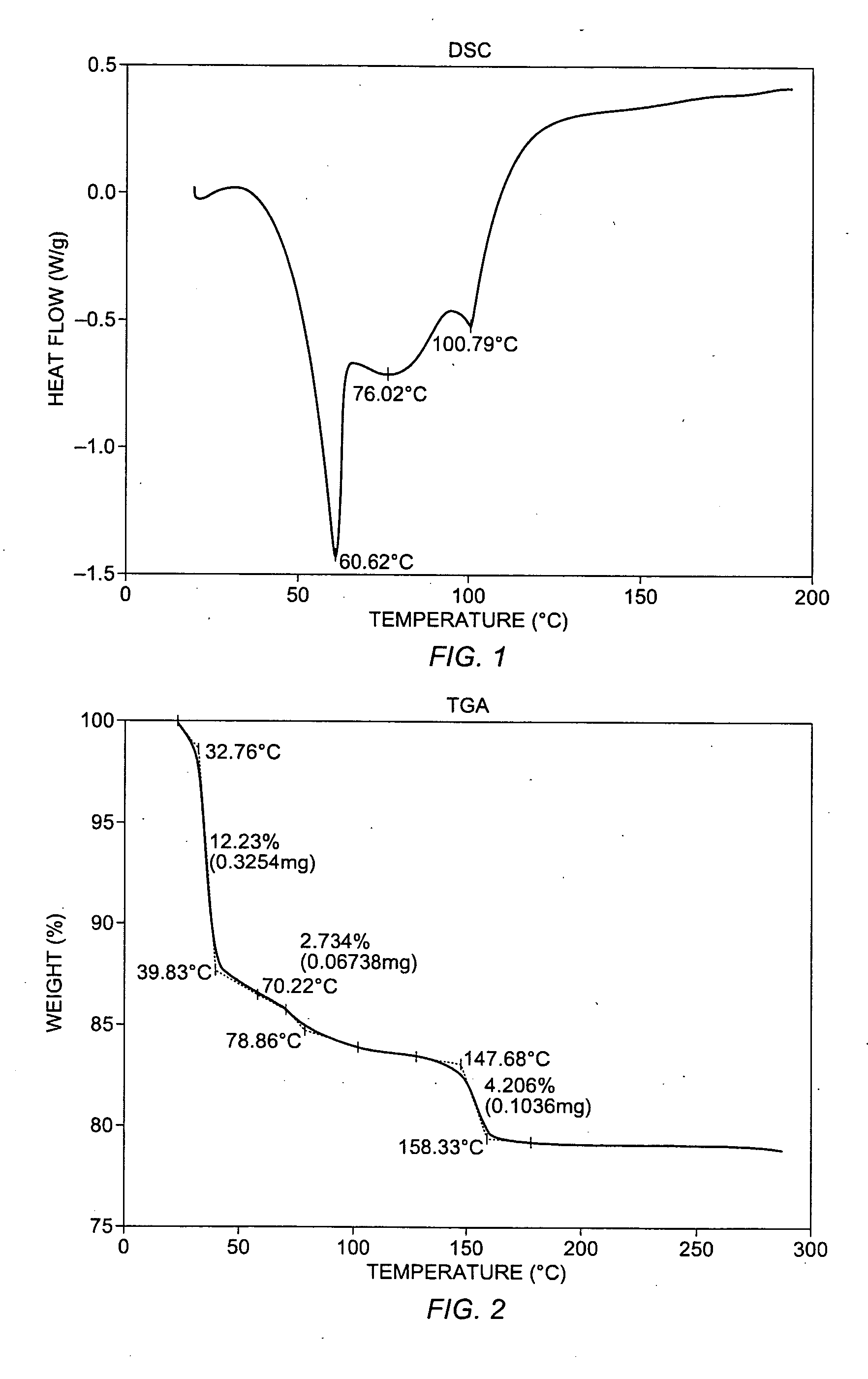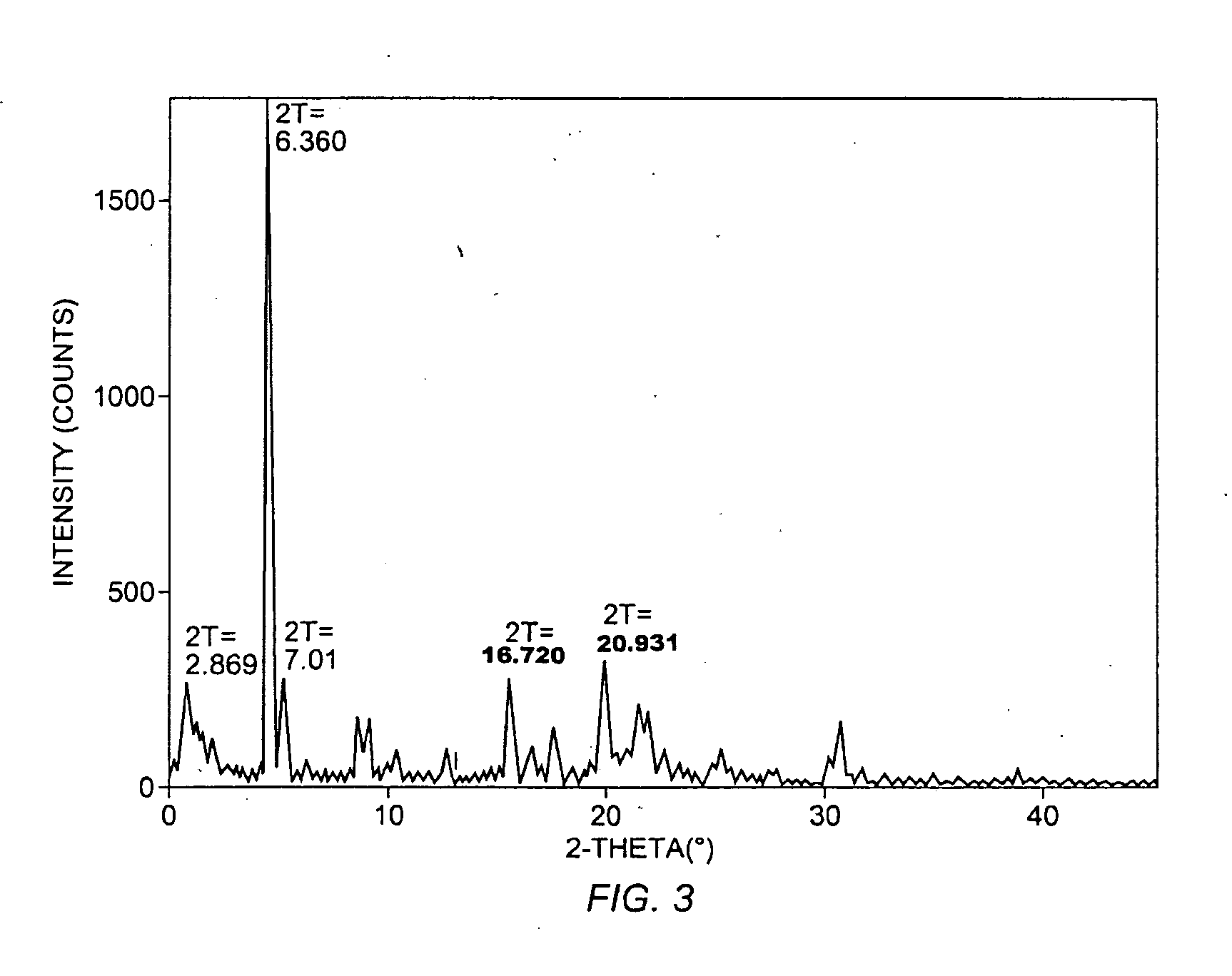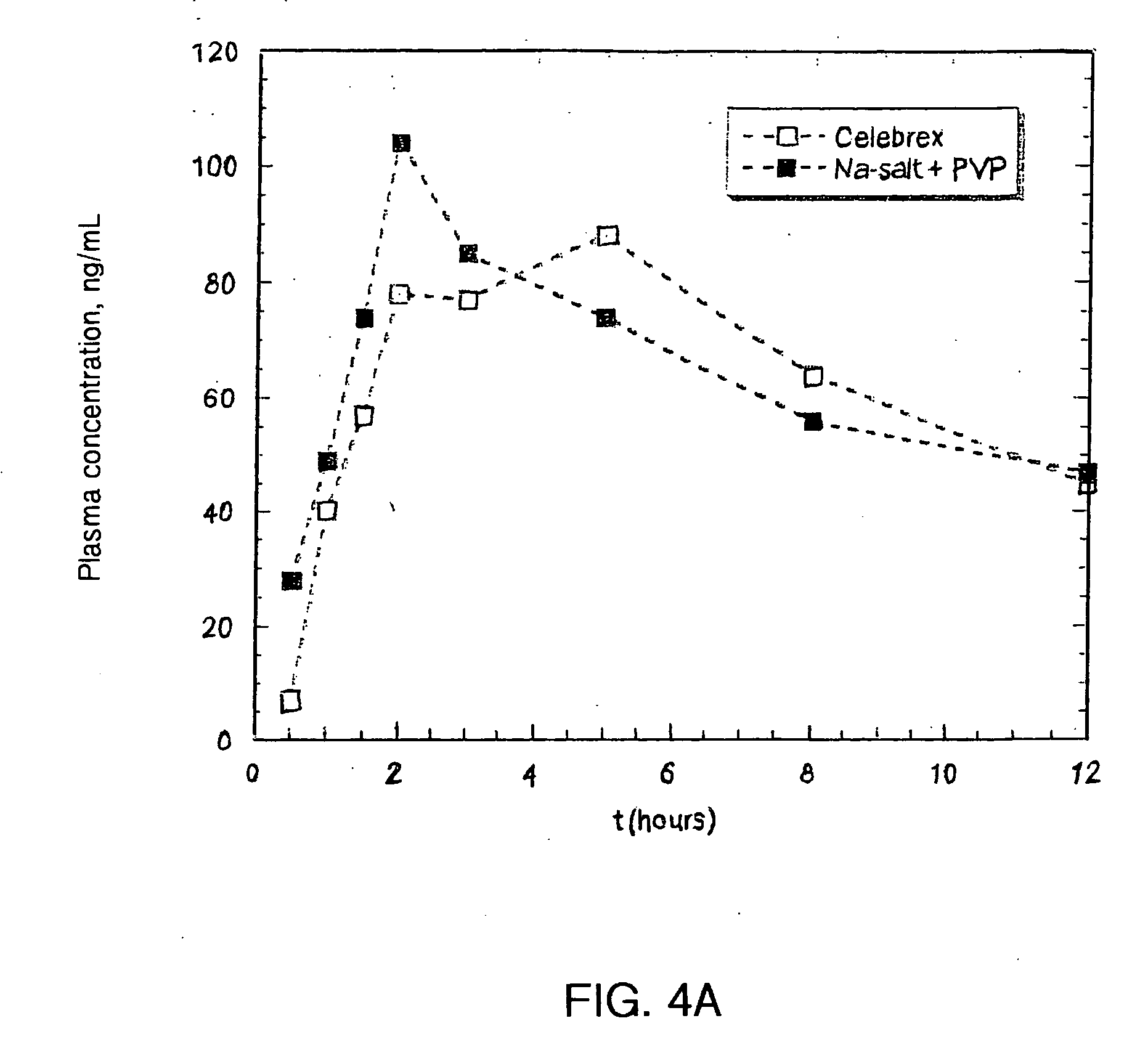Pharmaceutical compositions with improved dissolution
a technology of dissolving and pharmaceutical compositions, applied in the field of pharmaceutical compositions, can solve the problems of only minimal improvement, 10%, and no improvement of enhancer, and achieve the effects of minimizing the amount of api, high throughput screening, and relatively low screening scal
- Summary
- Abstract
- Description
- Claims
- Application Information
AI Technical Summary
Benefits of technology
Problems solved by technology
Method used
Image
Examples
example 1
Celecoxib Sodium Salt from Aqueous Solution
[0362] To 1.787 g celecoxib was added 5.0 mL NaOH (1 M) and 5 mL of a solution of 1 M NaCl. The mixture was stirred and cooled to give slow crystallization of celecoxib Na salt. The solid was collected via filtration and washed with additional 1 M NaCl (10 mL). The solid was allowed to dry under flowing N2.
[0363] TGA was performed on the sample by placing 7.149 mg of sample in the platinum pan. The starting temperature was 25 degrees C. with aheating rate of 10 degrees C. / minute, and the ending temperature was 300 degrees C. The resulting thermogram is shown in FIG. 1. The thermogram shows a mass loss of about 9.0% between about 25 and about 140 degrees C., attributed to the loss of about 2.1 equivalents of water. The hydration state of the salt can vary depending on the humidity, temperature, and other conditions.
[0364] The PXRD diffractogram for the compound prepared above is shown in FIG. 2. The diffractogram has characteristic peaks...
example 2
Celecoxib Sodium Salt from Isopropanol Solution
[0365] To 126.3 mg of celecoxib was added a 1.0 mL aliquot of isopropanol, and the mixture was heated to dissolve the celecoxib. Sodium ethoxide was added as a solution (21%) in ethanol (0.124 mL solution, 3.31×104 mol sodium ethoxide). An additional 1.0 mL of isopropanol was added. The mixture was stirred to obtain a slurry of white crystalline solids that appeared as fine birefringent needles by polarized light microscopy.
[0366] The slurry was filtered by suction filtration and rinsed with 2 mL of isopropanol. The solid was allowed to air dry before being gently ground to a powder. The product was analyzed by PXRD, DSC, and TGA as in Example 1, but a 0.5 mm capillary was used to hold the sample in the PXRD experiment. The compound lost 17.35% weight between room temperature and 120 degrees C. The DSC thermogram shows a broad endothermic region, which is consistent with a loss of volatile components with increasing temperature. The ...
example 3
Celecoxib Sodium Salt from Aqueous Solution
Synthesis 1: To a vial was added 29.64 mg celecoxib and 3.00 mL of 1 M sodium hydroxide. The celecoxib dissolved. After a time, the celecoxib precipitated from solution.
Synthesis 2: To a vial was added 7.10 mg celecoxib and 3.00 mL of 1 M sodium hydroxide. The celecoxib dissolved. Overnight, the celecoxib precipitated and formed white, needle-like crystals.
[0367] Synthesis 3: To a vial was added 17.6 mg celecoxib and 10 mL of 1 M sodium hydroxide. The celecoxib dissolved. The vial was placed in a beaker wrapped in aluminum foil and filled with a large tissue for insulation. The beaker was left and crystals formed within about 12-36 hours.
[0368] Analysis: The product solids from syntheses 1 and 2 were combined and analyzed by PXRD, DSC, and TGA as in example 1, but a 0.5 mm capillary was used to hold the sample in the PXRD experiment. The product salt was found to contain about 4 equivalents of water per equivalent of salt, although a...
PUM
| Property | Measurement | Unit |
|---|---|---|
| Angle | aaaaa | aaaaa |
| Angle | aaaaa | aaaaa |
| Angle | aaaaa | aaaaa |
Abstract
Description
Claims
Application Information
 Login to View More
Login to View More - R&D
- Intellectual Property
- Life Sciences
- Materials
- Tech Scout
- Unparalleled Data Quality
- Higher Quality Content
- 60% Fewer Hallucinations
Browse by: Latest US Patents, China's latest patents, Technical Efficacy Thesaurus, Application Domain, Technology Topic, Popular Technical Reports.
© 2025 PatSnap. All rights reserved.Legal|Privacy policy|Modern Slavery Act Transparency Statement|Sitemap|About US| Contact US: help@patsnap.com



